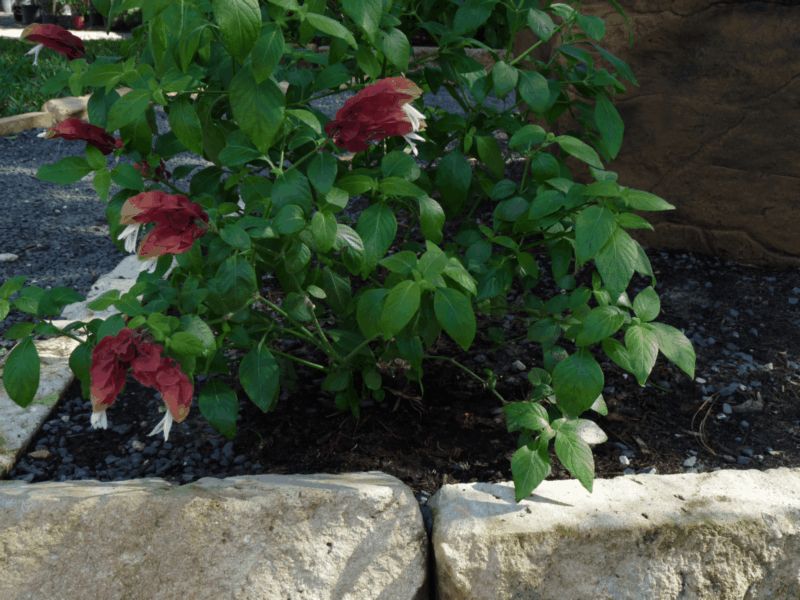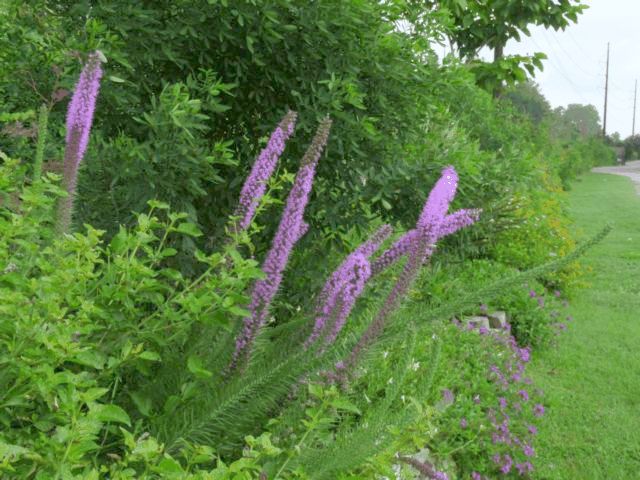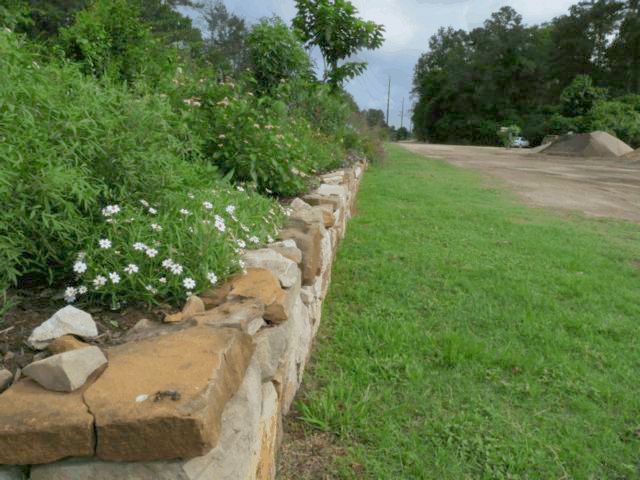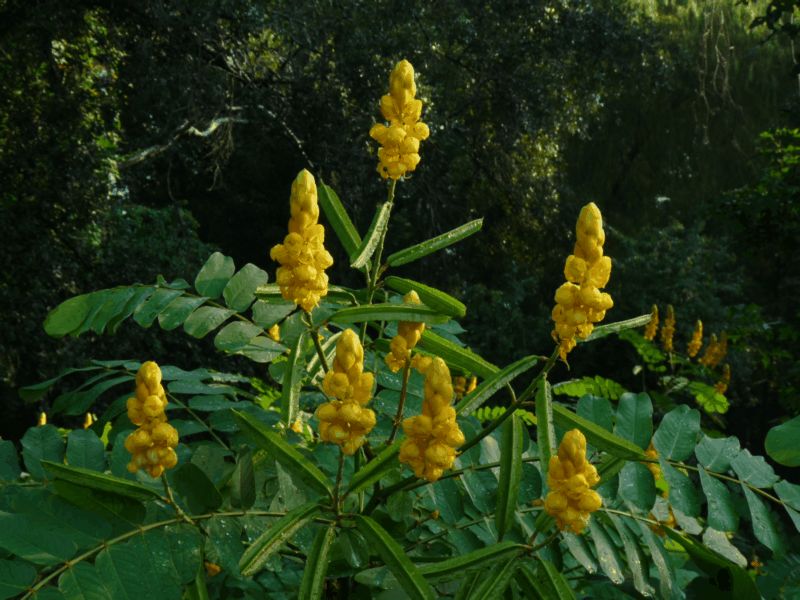




Working with mulches in hot and dry weather.
Houston is famous for challenging weather from one or two seasons per year, tropical rain and massive flooding to extended droughts and record heat. Over the last 18-24 months the Houston area has been in a drought and we have experienced some unusual weather patterns this winter and spring. This has affected us in many ways, from fall blooming plants in full bloom in April to how we use and apply mulch. When applying mulch one needs to consider the type and species of plants one is working with. It is always best to apply mulch or compost before planting if possible. However, sometimes we get started late in the season or need to mulch existing beds.
A few things to remember:
- The branches and limbs of some plants are easily broken (i.e. Impatiens, begonias, etc.), hence one must be careful when applying the mulch. In cannot be thrown on as around a shrub or tree. On other plants the bark layer may only be bruised or cracked but it stresses the plant leaving it more susceptible to drought, heat, or other disturbance.
- Many species of plants do not like to have their stems covered with mulch (i.e. verbenas, salvias, etc.) and will wilt and die. Other plants love being covered with mulch and will root into it (i.e. ivy's, cestrum's, etc.). Grafted roses should not have the crown covered with soil or mulch while roses on their own roots do not care.
- In general, most woody plants have different types of bark on their above ground stems and on their root systems. The above ground parts do not like having mulch on them as it may lead to rot and disease.
- Many plants are temperature dependant and are seasonal in nature. For example petunias tend to decline in Houston when temperatures get over 90 0F. Other examples are tuberous begonias, pansies, snapdragons, fuchsias, etc. If we are getting into late spring and temperatures are getting into the 90's these species are already beginning to get stressed. If we apply composted mulch (biologically alive) it may have temperatures of over 100 0F or even much more after the extra aeration caused by loading and dumping. Storage piles at the mulch yard will typically be over 100 0F even in winter (unless the mulch is really bad, dead and lifeless).
- If the soil is too moist (improper irrigation is a common cause), adding a mulch layer will prevent the soil from drying out. Wet and waterlogged soils do not let air (oxygen) into the root zone. This encourages soil diseases and other pathogens.
- Plants need time to adjust to temperature changes just as humans do. We often hear the term "harden off" or allow a plant to adjust to changes in the environment. This year we had some very warm days early in the season before plants could adjust. Hence, if warm mulch (100-125 0F) is applied to these plants they will be more sensitive to heat stress or damage.
- If the plants are stressed for other reasons, pH is off (high or low), soil is too dry or too wet, plants that prefer sandy soils are planted in clay and vice versa), weed and feed has been applied, shade lovers in sun, etc. Then the plants will be more susceptible too damage from warm mulch.
- If plants are being watered (irrigation) from municipal water supplies that contain chlorine and chloramines, this damages the plants and kills off beneficial life in the soil which also weakens the plant leaving it more susceptible to other damage (possible heat stress) from the mulch.
- Mulches that are biologically alive (composted) will exhibit the most heating (i.e. microbes generate the heat). In years with normal rainfall finished composted mulch will have moisture content between 35-45%. When these mulches are applied, the cooling from evaporation quickly lowers the temperature of the mulch reducing the chance of the mulch causing heat stress. This year (2005-2006), even after applying millions of gallons of extra water to our mulch, the storage piles only have 20-25% moisture content. This is enough to allow the microbes to grow and work (generate heat) but not enough to give sufficient evaporative cooling.
- For example, the other day we have also measured the temperature of our mulch storage piles at 11 AM. On the north or shady side of the pile (depth of 2 feet) the temperature was only 90 0F. However, the south or sunny side of the pile at the same depth the temperature was 140 0F a 50 degree change. Hence, even the side of the pile the mulch is loaded from can make a very large difference.
- The lower quality mulches (commercial and industrial grades) do not have enough beneficial microbes in them to heat up properly. These are generally mulches that have a very high carbon to nitrogen ratio. These may be colorized ground up pallets or bark treated with hazardous waste (i.e. boiler ash). Since they lack the beneficial microbes the risk of them causing heat stress is less.
- Pavement from concrete to black asphalt can get very hot (over 170 0F) after a few hours in the sun. If any type mulch is dumped onto hot pavement it will absorb the heat energy. When the mulch is applied to existing plants it can cause heat damage.
- Turf grass may yellow after having warm mulch sitting on it for a few hours. The problem seems to be worse on moist soils. The warmth from the mulch causes the moisture in the soil to evaporate and essentially the grass blades experience some mild cooking effects. The effects are minor and the grass will green back up in a few days.
Prevention:
- One method is to water the mulch in as it is applied (many people do this anyway). The water will cool off the mulch and prevent heat stress from occurring. The extra water allows the beneficial microbes to grow even faster to help create soil structure and prevent disease. Additionally, the extra moisture allows fungal hyphae to grow and bacterial polysaccharides to form that locks mulch particles to each other and onto the soil surface. This practice greatly reduces the chance of the mulch washing out in a heavy rainfall.
- Applying the mulch in early morning when the air temperature is lower reduces the risk of problems.
- Applying the mulch in shady areas reduces the chance of problems (conversely applying mulch to plants in full sun increases the risk factor).
- Spreading the mulch out a little on the driveway for a few minutes before applying will also reduce the temperature by allowing the heat to radiate off.
- Some companies like to receive a large delivery of mulch and place it in their own bins and allow it to cool off a couple days before loading and taking it to the job site.